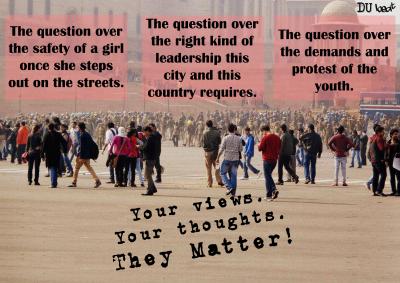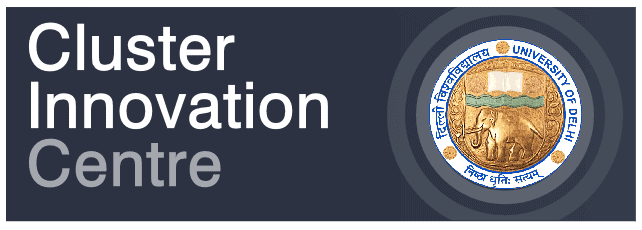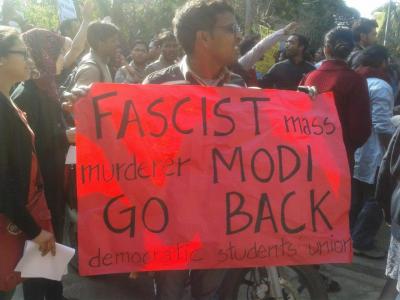 After months of hard work, the SRCC students’ union finally executed the much awaited event of Narendra Modi’s visit to the college.Although the program was a huge success with around 1800 students turning up and thronging the sports complex to hear the Chief Minister of Gujarat speak on the theme: “Emerging business models in the global scenario”, some students protested in front of the college, shouting slogans against SRCC’s move to call Modi. In all, over 1000 students had assembled outside SRCC, which also included Modi’s supporters. Fortunately, the security was quite strong all around the campus with more than 150 police officers checking ID cards and allowing only SRites inside the college.
After months of hard work, the SRCC students’ union finally executed the much awaited event of Narendra Modi’s visit to the college.Although the program was a huge success with around 1800 students turning up and thronging the sports complex to hear the Chief Minister of Gujarat speak on the theme: “Emerging business models in the global scenario”, some students protested in front of the college, shouting slogans against SRCC’s move to call Modi. In all, over 1000 students had assembled outside SRCC, which also included Modi’s supporters. Fortunately, the security was quite strong all around the campus with more than 150 police officers checking ID cards and allowing only SRites inside the college.
The protest took a turn for the worse when a section of students tried to break the barricade to get in and some pro-Modi students joined in to add to the confusion. It was then that the police had to use water cannons and even lathi charge. This went on for almost the entire session at the end of which students attending the event were told to stay back until the crowd subsides. There were also reports of ABVP activists misbehaving around campus.
The students were demonstrating to oppose his entry into Delhi University calling Modi “Fascist mass murderer”. They said that his invitation is wrong because it overlooks the communal riots in Gujarat in 2002 in which 1200 people were killed while he was in office. “This is pure nonsense, how is Modi’s visit to address students connected with any riot whatsoever! He is a man of action and we respect him for what he did for the development of Gujarat. I think they are creating a mountain out of a mole hill by making it a political issue”, says Bhargav, an SRite. The event, however, ended without any serious harm or injury to anyone.
was in office. “This is pure nonsense, how is Modi’s visit to address students connected with any riot whatsoever! He is a man of action and we respect him for what he did for the development of Gujarat. I think they are creating a mountain out of a mole hill by making it a political issue”, says Bhargav, an SRite. The event, however, ended without any serious harm or injury to anyone.
Aishwarya Chaurasia
[email protected]
Image credits: Sakshi Gupta





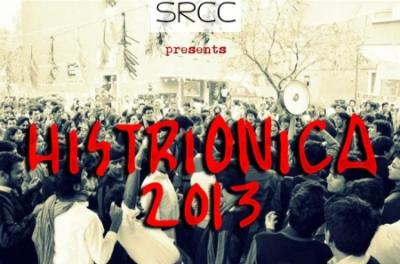
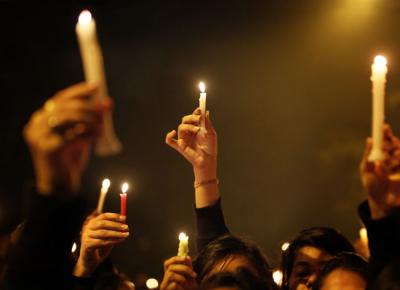
 fought against the rapists for her life. “The crowd was very peaceful and calm. More than a sense of revenge, there seemed to be a solemn atmosphere. Despite the fact that there was a group of people yelling ‘Hang the rapists!’ at the top of their lungs, most present realised that the point of meeting at Jantar Mantar was to pay tribute to the girl who was raped as well as all the other women who have suffered due to shameless, savage minds,” said Ankita, a student of Lady Shri Ram College.
As students continue to organise street plays and people come together to light candles in memory of the 23 year old medical student, the direction of these protests and marches seem to be aimed at a complete overhaul of the existing safety regulations and policies. This might just be the start of a new revolution, spearheaded by the dynamic and powerful youth of a nation infested with outdated laws and run by ageing leaders well beyond their time.]]>
fought against the rapists for her life. “The crowd was very peaceful and calm. More than a sense of revenge, there seemed to be a solemn atmosphere. Despite the fact that there was a group of people yelling ‘Hang the rapists!’ at the top of their lungs, most present realised that the point of meeting at Jantar Mantar was to pay tribute to the girl who was raped as well as all the other women who have suffered due to shameless, savage minds,” said Ankita, a student of Lady Shri Ram College.
As students continue to organise street plays and people come together to light candles in memory of the 23 year old medical student, the direction of these protests and marches seem to be aimed at a complete overhaul of the existing safety regulations and policies. This might just be the start of a new revolution, spearheaded by the dynamic and powerful youth of a nation infested with outdated laws and run by ageing leaders well beyond their time.]]> 
 I recently took a trip with my college, Indraprastha College for Women, to Jodhpur and Jaisalmer, two popular tourist destinations in Rajasthan. The trip started with the blue city of Jodhpur and a visit to The Umaid Bhawan Palace. It is one of the world’s largest private residences. The Palace is divided into three functional parts – a luxury Taj Palace Hotel, the residence of the erstwhile royal family and a Museum focusing on the 20th century history of the Jodhpur Royal Family. A section of the palace showcases vintage cars owned by the royal family. The palace is picture perfect and the view stunningly beautiful. One can see the whole city from the palace since it is located at the highest point of the city.
I recently took a trip with my college, Indraprastha College for Women, to Jodhpur and Jaisalmer, two popular tourist destinations in Rajasthan. The trip started with the blue city of Jodhpur and a visit to The Umaid Bhawan Palace. It is one of the world’s largest private residences. The Palace is divided into three functional parts – a luxury Taj Palace Hotel, the residence of the erstwhile royal family and a Museum focusing on the 20th century history of the Jodhpur Royal Family. A section of the palace showcases vintage cars owned by the royal family. The palace is picture perfect and the view stunningly beautiful. One can see the whole city from the palace since it is located at the highest point of the city. the second gate. The fort is massive and every part of it has a story to tell. The carvings are incredibly intricate. The view from this fort gives a glimpse of the blue rooftops of the old city and explains why Jodhpur is called the blue city. They also have a tiny little café providing you with tasty nick nacks. The Mehrangarh Fort is one place not to miss if visiting Jodhpur. It’s a treat to all history lovers and one of the most interesting forts I’ve ever visited.
the second gate. The fort is massive and every part of it has a story to tell. The carvings are incredibly intricate. The view from this fort gives a glimpse of the blue rooftops of the old city and explains why Jodhpur is called the blue city. They also have a tiny little café providing you with tasty nick nacks. The Mehrangarh Fort is one place not to miss if visiting Jodhpur. It’s a treat to all history lovers and one of the most interesting forts I’ve ever visited. which is 300kms from Jodhpur. we stayed in the camps close to the dessert in the outskirts of the city. The first thing I noticed upon arrival is the stars, millions and millions of stars at every patch in the sky twinkling away to glory. It’s absolutely breathtaking.
which is 300kms from Jodhpur. we stayed in the camps close to the dessert in the outskirts of the city. The first thing I noticed upon arrival is the stars, millions and millions of stars at every patch in the sky twinkling away to glory. It’s absolutely breathtaking. beautiful that will engrave itself into your brain forever.
beautiful that will engrave itself into your brain forever.